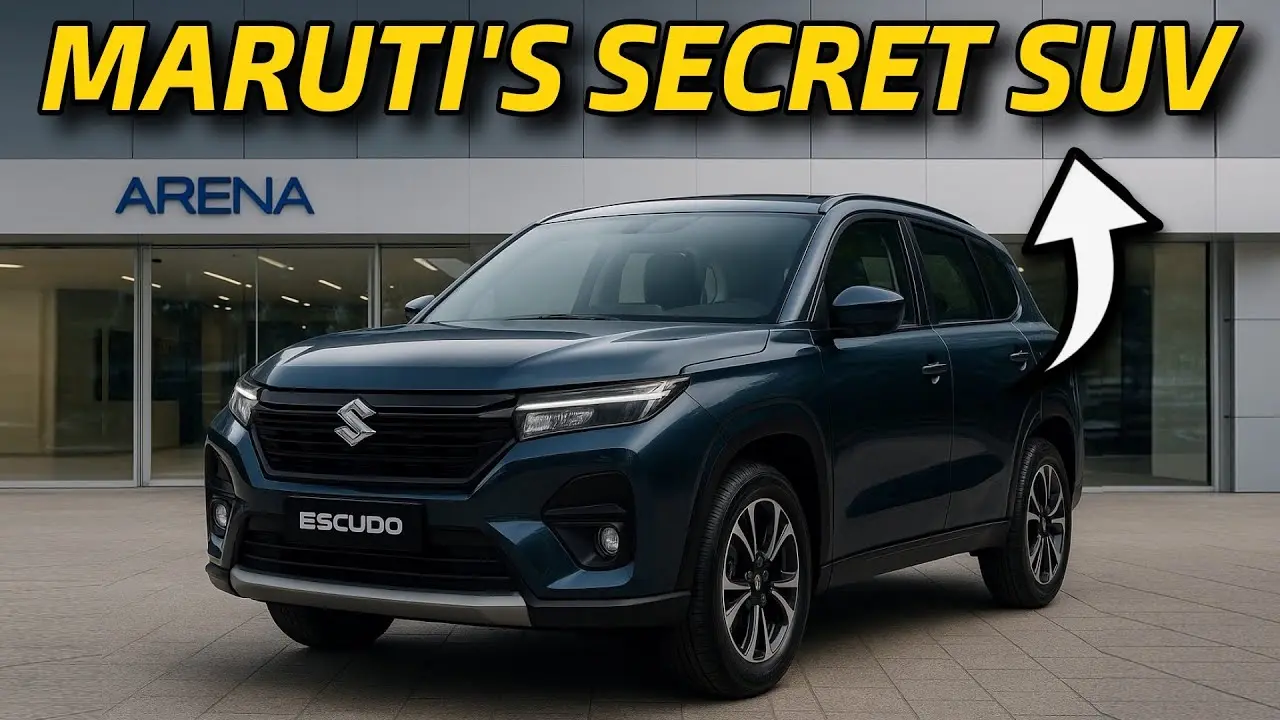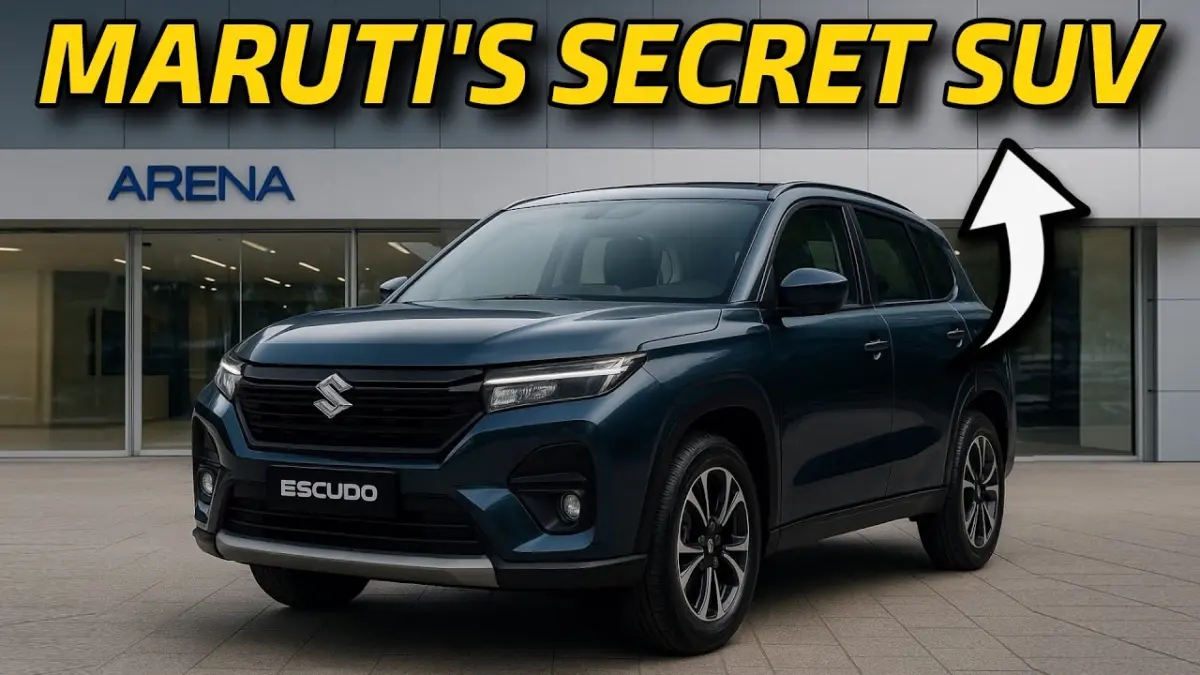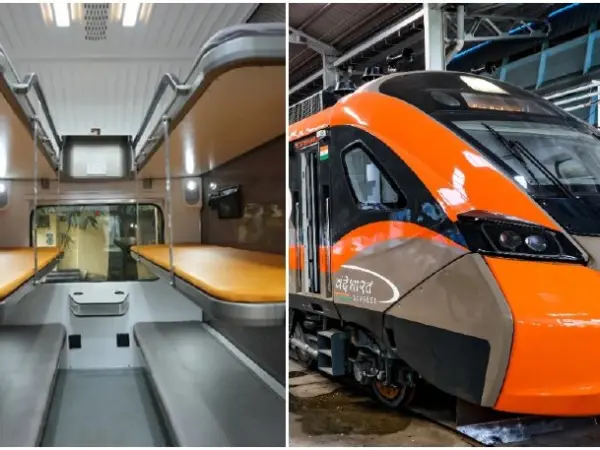As India’s automobile market inches toward a sustainable and fuel-efficient future, strong hybrid SUVs are shaping up to be the next big frontier. With leading manufacturers gearing up to offer fuel-savvy and environmentally responsible alternatives without compromising on performance, the stage is set for a hybrid revolution. Among the most anticipated entries are three new hybrid SUVs from Maruti Suzuki and Hyundai, all poised to bring a dynamic shift to the competitive SUV landscape.
1. Maruti Suzuki Escudo: A Bridge Between Brezza and Grand Vitara
Maruti Suzuki, India’s largest carmaker, is preparing to debut a brand-new SUV under the nameplate “Escudo,” a moniker familiar in international markets. Strategically placed between the Brezza and the Grand Vitara, this midsize five-seater will target a wide demographic of urban families and young professionals seeking style, space, and fuel economy.
The Escudo will be retailed via Maruti’s Arena network and will likely offer larger dimensions than the Brezza, bringing better practicality and road presence. Under the hood, it will mirror the powertrain options of the Grand Vitara—featuring both 1.5-litre mild hybrid and strong hybrid petrol engines. Built on the Global C architecture, the Escudo could become a game-changer for customers eager to experience hybrid technology without stretching their budgets too far.

2. Next-Generation Hyundai Creta: Hybrid Efficiency Meets Next-Gen Styling
Hyundai, known for redefining urban mobility, is charting a bold course with its next-generation Creta, codenamed SX3. Scheduled for launch around 2027, the new Creta will represent a significant design departure from its predecessor. While the familiar engine and transmission configurations might remain, the most striking update is expected to be the introduction of a robust strong hybrid petrol system.
This new drivetrain will pair a 1.5-litre petrol engine with an electric motor and a higher-capacity battery, aiming for a blend of higher fuel efficiency, lower emissions, and more responsive acceleration. The strong hybrid system is also expected to be modular, sharing components with the hybrid Kia Seltos due in 2026.
In addition to the powertrain, Hyundai plans a complete overhaul of the Creta’s interiors—expect a more premium cabin, a larger touchscreen interface, digital instrument cluster, and ADAS features to attract tech-savvy buyers.
3. New Hyundai Premium 7-Seater SUV: Luxury Meets Hybrid Tech
Adding to its SUV arsenal, Hyundai is readying a brand-new premium 7-seater SUV, strategically positioned between the Alcazar and the flagship Tucson. This yet-to-be-named vehicle will likely roll off the production lines at Hyundai’s upcoming Talegaon plant in Maharashtra and could hit Indian roads by 2027.
Sources suggest that this three-row hybrid SUV will be underpinned by a strong hybrid powertrain akin to the one planned for the next-gen Creta. Designed to combine space, sophistication, and fuel savings, it could prove a compelling option for large families seeking an alternative to diesel-powered SUVs. Expected features include ventilated seats, panoramic sunroof, third-row AC vents, advanced driver-assist systems, and wireless tech integration—blending comfort with modern tech.
A Shift on the Horizon
As fuel prices fluctuate and emission norms tighten, strong hybrid SUVs are no longer a niche—they’re fast becoming mainstream. With Maruti Suzuki and Hyundai leading the charge, Indian consumers can look forward to a new era of efficient, refined, and technologically advanced SUVs tailored to modern driving needs.
In Summary:
| SUV Model | Expected Launch | Powertrain | Key Highlights |
|---|---|---|---|
| Maruti Suzuki Escudo | Late 2025–2026 | 1.5L mild + strong hybrid | Arena offering, practical size, value-for-money |
| Next-Gen Hyundai Creta | 2027 | 1.5L strong hybrid | New design, hybrid power, advanced cabin features |
| Hyundai 7-Seater SUV | 2027 | Strong hybrid (TBC) | 3-row premium SUV, hybrid tech, high feature load |
Stay tuned as these hybrid trailblazers begin to define the next chapter of India’s automotive evolution





